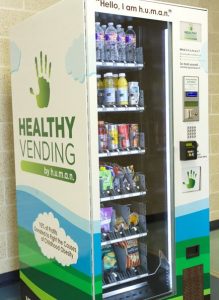
Workplace Wellness & Retention
A report by the Work Institute revealed that the first six months of 2021 yielded a voluntary turnover rate of 25%. Experts predict that 2021 may exceed 2019, the highest year recorded by the Bureau of Labor Statistics since it began reporting this data in 2001.
A midyear retention report conducted by the Institute revealed top reasons for voluntary separation between January and June 2021. Better career opportunities led the charge out the exit at 21.1%, followed by 10.4% reporting a need for better work-life balance and another 10.2% leaving over family and health conce
rns. Combined, concerns for health and work-life balance account for 20.6% of these costly departures.
Employee Benefit News reports that U.S. employers spend roughly one-third of an employee’s salary to backfill their position. The higher the position in the company, the higher the cost for replacement. Businesses lose more than $1 trillion annually for a problem that is largely “self-inflicted,” according to Gallop.

More companies are realizing that a competitive compensation package is more than the numbers. It also must include perks that address work-life balance, equity and inclusion, and overall well-being. However, the path to creating such a workplace continues to elude companies still transitioning through the ripple effects of a global pandemic. Those companies continue to experience a revolving door of talent — and money.
CNBC Make It Workplace Reporter Jennifer Liu reveals data that should send shivers up organizational spines in her article “1 in 4 workers quit their jobs this year — here’s what companies are getting wrong about retention.” Liu shares survey results indicating that as of August 2021, 65% of people are looking for new jobs, on top of the more than 25% turnover year to date. Not only is this year approaching record-breaking levels for voluntary turnover, but the mass exodus is led by women and long-term employees.
Ian Cook, vice president of people analytics for Visier, claims that companies are still trying to apply pre-pandemic, one-size-fits-all approaches to retention instead of paying attention to the reasons people quit. They fail to acknowledge that the pandemic provided many with time to reevaluate personal values and goals and determine whether their jobs or organizations are a good match. This global introspection and resulting turnover emphasized the need for a significant shift in how companies interact with and value employees.
The compulsory evolution to remote and hybrid workforces is forcing organizations to redefine corporate culture, including a sobering evaluation of wellness benefits and employee demands for authentic corporate values and a healthier work-life balance.
Attracting and retaining top talent is significantly more difficult with COVID and all its variants in the mix. The Society for Human Resource Management (SHRM) reports that 62% of HR pros agree that it’s difficult to maintain a healthy workplace culture during the pandemic, but it can be done. Here are just a few examples of how companies around the world are making a run at retention.
Benefit Bumps
In the United Kingdom, 86% of companies are rolling out new options for employee wellness, according to jll.com. More than half of U.S. companies are reporting dedicated programs to support mental health and emotional well-being. Realizing that the days of “lunch-and-learns” are over, half of Asia-Pacific companies are beefing up healthcare benefits.
Home Delivery

As technology drives productivity, companies are investing to improve the cost, efficiency and convenience of working from home, providing employees with allowances to purchase home office equipment. They’re also delivering meals for employees who work across their lunch or dinner hours. This is not quite hitting the work-life balance mark, but it is possibly decreasing technology frustration on both ends.
Extreme Makeovers
Forward-leaning companies are investing in environments that provide employees what they need to optimize their well-being and, in turn, their productivity. These companies are playing for the long game, investing now to attract and retain the best talent.

Work environments are getting makeovers as more companies create private, Zen-like workspaces for optimal heads-down time, including sitting on a stability ball or walking on a treadmill in front of a standing desk.
Wearing Your Heart on Your Sleeve
Most Americans use a smart watch, phone or other device that tracks movement, heart rate and even ovulation, if that interests you. Within the past five years, the number of connected wearable devices has tripled worldwide, estimated to reach 1.1 million by 2022. Some companies are taking advantage of this technology, using real-time data to evaluate employee well-being and productivity.
The study “Wearables in the workplace: The brave new world of employee engagement,” by Kateryna Maltseva, describes wearable devices that monitor and provide performance-related feedback about employees to employers for the two-fold purpose of optimizing productivity and employee well-b
eing.

Wearables outlined in the study included glasses, watches, helmets and a 15-pound exoskeleton. Each scenario outlines how data is streamed real-time to a remote location. For some, the data efficiently captures notes for interaction with patients; for others, physical activity is measured to prove healthcare benefit eligibility. The “wearable” helmet detects emotional stress that triggers break times, and the exoskeleton provides extra “muscle,” reducing the chance of injury on the job.
But devices are just one of two forms of wearable technology. Wearable textiles can measure how our senses react to our environment. So regardless of how dialed-in your poker face is, if you’re angry, your boss may know it. Does that concept raise your heart rate just a little? It did mine.
If your brain just hot-stepped over to Orwell’s “1984,” you’re not alone. The study also explores the ethical challenges that may come with this level of performance monitoring. Regardless, the science makes sense.
Communication
Whether it’s about DEI, benefits, performance expectations or balance, it all rolls up to workplace culture, whether working on-site, remote or in a hybrid situation. That’s good news for professional communicators. As companies continue to shift toward front-end and ongoing investment in retention through career development opportunities and employee well-being, the need for quality messaging will continue to drive the value of organizational communications.
As new standards are established for productivity, efficiency and workplace well-being, there also are new ideas and insights about what we can and should do, with a growing pile of data to prove it. But as the workforce continues to liberate itself from “because I said so” leadership, that data is useless without effective communications to give it traction. The kind of traction that fuels loyalty and stimulates sustainable excellence and commitment throughout a workforce.
More than ever, organizations must take a holistic approach toward recruiting and retention. Be authentic. Walk the talk. Make quality hires that align responsibilities with natural strengths, not just experience. Listen. Provide opportunities for growth. Listen. Celebrate wins. Be supportive. Ask questions. Listen. Implement suggestions. Pay attention to exit interviews. Create opportunities to maximize employee potential. Then listen. Communication is key.
Tara Mogan Blom, MMC, ABC, is a strategic communications consultant and certified holistic wellness coach. A master-certified Predictive Index analyst, Blom provides organizations and individuals with research-based tools to attract and retain the best talent and build highly effective, inclusive and collaborative teams.



